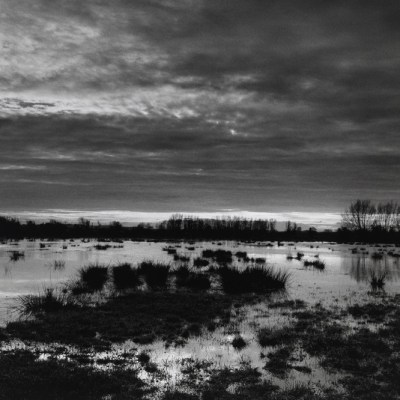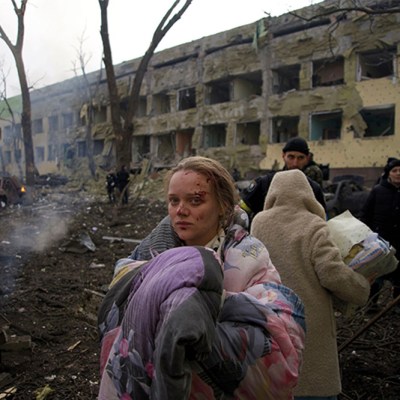There is a photograph taken by Gerda Taro in August 1936 that shows a woman kneeling on the sand of a beach outside Barcelona, holding a handgun. She is leaning forward, aiming directly out of the square frame of the shot, the barrel of the gun in a line with her mouth. The overalls she is wearing are baggy and a little rumpled, but the lines and angles her form creates are bold. The photo is taken from low down – I imagine Taro lying flat on the sand, facing her subject from the side – so that small stones by the woman’s bent leg stand out more sharply than the buildings smudged into the distance. The overcast sky and its gathering clouds, gives the picture a momentous feeling.
 The photograph was first published in the French magazine Vu and it represents something of what felt, to contemporary observers, most revolutionary and most worth fighting for in the embattled Spanish Republic. Only a few weeks before it was taken, a group of military generals had attempted a coup to overthrow Spain’s elected government. Sufficient forces rallied to the defence of the government to prevent the coup from succeeding immediately, despite the fact that the rebels soon had substantial support from Nazi Germany and Fascist Italy. Instead, a civil war erupted, unleashing, in Catalonia, a simultaneous social revolution – one of the features of which was new liberties for women. The woman aiming a gun on the beach was a recruit for the militias being formed to defend the Republic. For the rest of the world, this was something shocking – something newsworthy – which is no doubt why Taro chose to capture the scene on her first wartime visit to Spain.
The photograph was first published in the French magazine Vu and it represents something of what felt, to contemporary observers, most revolutionary and most worth fighting for in the embattled Spanish Republic. Only a few weeks before it was taken, a group of military generals had attempted a coup to overthrow Spain’s elected government. Sufficient forces rallied to the defence of the government to prevent the coup from succeeding immediately, despite the fact that the rebels soon had substantial support from Nazi Germany and Fascist Italy. Instead, a civil war erupted, unleashing, in Catalonia, a simultaneous social revolution – one of the features of which was new liberties for women. The woman aiming a gun on the beach was a recruit for the militias being formed to defend the Republic. For the rest of the world, this was something shocking – something newsworthy – which is no doubt why Taro chose to capture the scene on her first wartime visit to Spain.
Taro was an antifascist and a refugee from Nazi Germany; the Republican cause mattered to her on a personal level. I think the subject of this picture would have excited her too. She was far from the only female press person to travel to Spain to cover the war (among photographers, the Hungarian-born Kati Horna springs to mind) and some of them – Taro perhaps most of all – took enormous risks to cover the conflict. One of the notable characteristics of the Spanish Civil War was the new way in which it was covered: technological advances gave photojournalists smaller, lighter cameras that could get them closer to the frontlines. Taro took the beachfront photo using a Rolleiflex with film that could be changed quickly and that focused quickly; she later switched to a Leica.
A photograph taken by Robert Capa in 1936 gives us a glimpse of the conditions. Capa and Taro had met in Paris, where they had both gone into exile, and soon lived and worked together. (It was in Paris that they put aside their birthnames of Gerta Pohorylle and Endre Friedmann for the new professional identities of Capa and Taro.) Capa’s photograph shows that not all of Taro’s pictures were taken from the safety of training sessions. This is an action shot. It shows Taro taking cover on the Cordoba front, crouching behind a Republican soldier. She looks up, eyes wide with anticipation – perhaps even fear – alert for danger overhead, her throat bared to the camera like an expression of her vulnerability. It’s all the more haunting when you know what followed: her mortal injury the following year, as she covered the chaotic Republican retreat from Brunete. She is thought to be the first female war photographer to have died in the field.
Gerda Taro and Robert Capa in Paris, 1936. Photo: Fred Stein Archive/Getty Images

The romanticism of Taro’s picture of the militiawoman is, to me, powerful, but also troubling. War is not beautiful, yet the photograph is. There is something unseemly about viewing, for example, Taro’s photographs of refugees in Almería in a gallery setting – in admiring the excellence of the composition. This was never Taro’s intention. She saw herself as a journalist rather than an artist, calling on France, Britain and the United States to recognise what was being done to Spanish people by Franco and his allies, and to protest against it.
Taro’s reputation diminished after the war, at least partly because she was overshadowed by Capa’s fame, but a number of discoveries in recent years have helped to revise the picture. Taro’s biographer Irme Schaber has done much to illuminate the facts of her life, and when collections of Capa and Taro’s negatives from Spain emerged in the 2000s, many photographs that had been previously attributed to Capa were found to have been taken by Taro, helping to secure her reputation as one of the most interesting photographers to cover the conflict. The pictures she took in Spain chronicle moments of exhilarating possibility and of appalling tragedy – which also makes them a fitting chronicle of Taro’s life.
Tomorrow Perhaps the Future: Following Writers and Rebels in the Spanish Civil War by Sarah Watling will be published by Jonathan Cape in February.


